
Rediscovering Japan

Rediscovering Japan
Travel (Kagoshima Part 2 (Kagoshima/Chiran))

by tomizuta
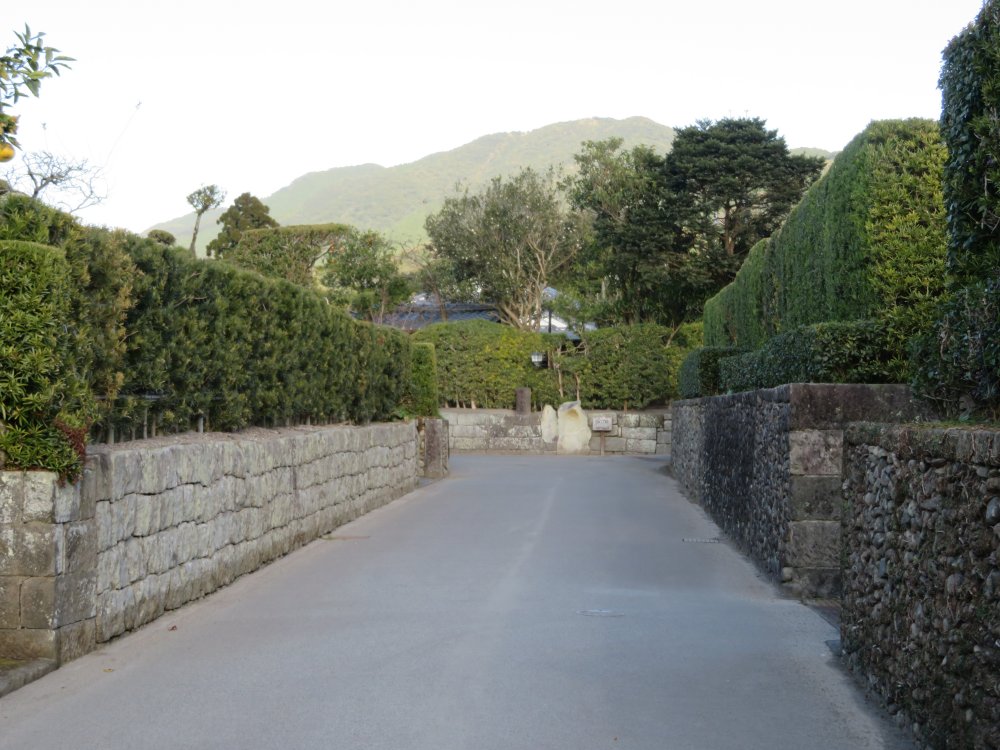
The beautiful samurai residence area of Chiran.
We woke up early to view Mount Sakurajima from the Shiroyama (castle hill). Following that we went to the observatory atop the castle hill. There is a free car park with about ten parking spaces. From there it is a five minutes’ walk to the observatory deck, where you can get a spectacular view of Kagoshima City and Mount Sakurajima. It certainly is a worthwhile visit. I stopped at one of the gift shops on the way to the observatory that specializes in craft made from tsuge (Japanese boxwood) trees. South Kagoshima Prefecture is a famous tsuge craft area.
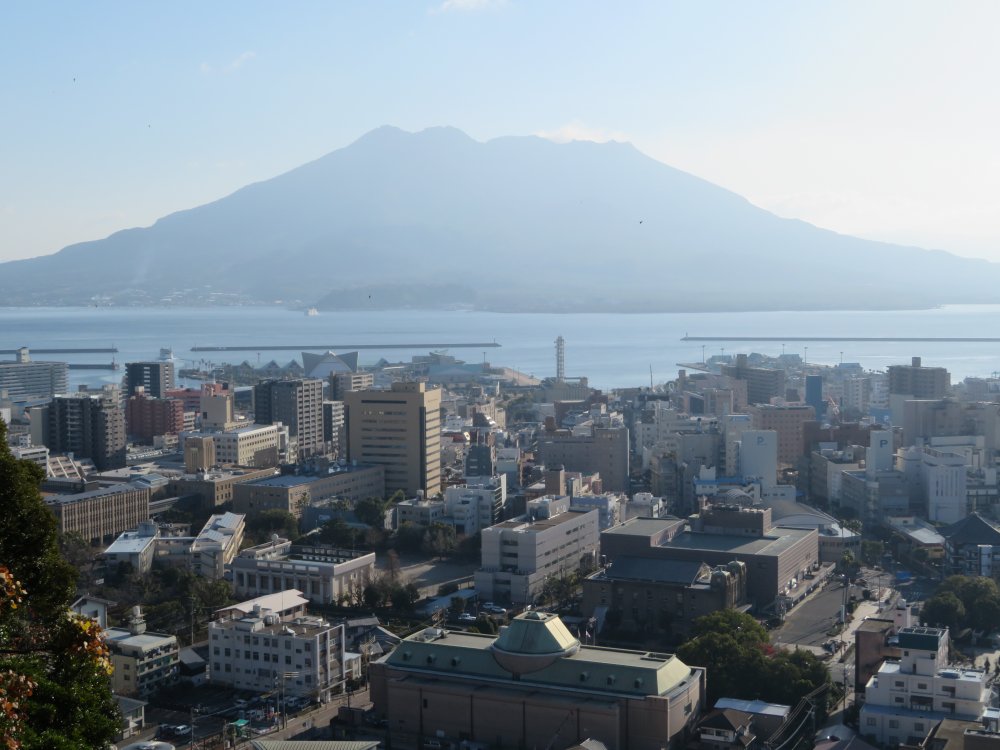
View of Kagoshima City and Mount Sakurajima from the Shiroyama observatory deck.
We drove down to the bottom of the hill to visit Reimeikan Museum. This is a history museum opened in 1983 where the main castle (where the Shimazu feudal lord resided in the Edo era) of Kagoshima (Tsurumaru) Castle stood till it was abandoned and destroyed by fire in 1874. Subsequently, the Seventh High School (which became Kagoshima University) was opened on the main castle site. From 1883 to 1936, Ijinkan which I introduced in Part 1 was moved to this site to serve as the main building of the High School. Reimeikan has an extensive display of facts and objects from the pre-historic era to modern times. Amongst other facts, I learned the long history of the Shimazu Family, Tsurumaru Castle was unique in that it did not have a grand castle keep which all other main castles have, that the proportion of samurais of the population was 25%, five times higher than the average (many samurais were spread in the countryside protecting the area and were called to military duty for the Shimazu feudal lord when needed, and that the remaining 75% of the population had to support them. The display of Tenmonkan (Kagoshima’s entertainment area) as it looked in the first half of the 19th century was also interesting. There is a room displaying facts about the Seventh High School as well. English explanation is provided throughout. It was well worth the admission fee of 310 yen. Parking at the back of the museum is free if you get a stamp at the admission office of the museum.
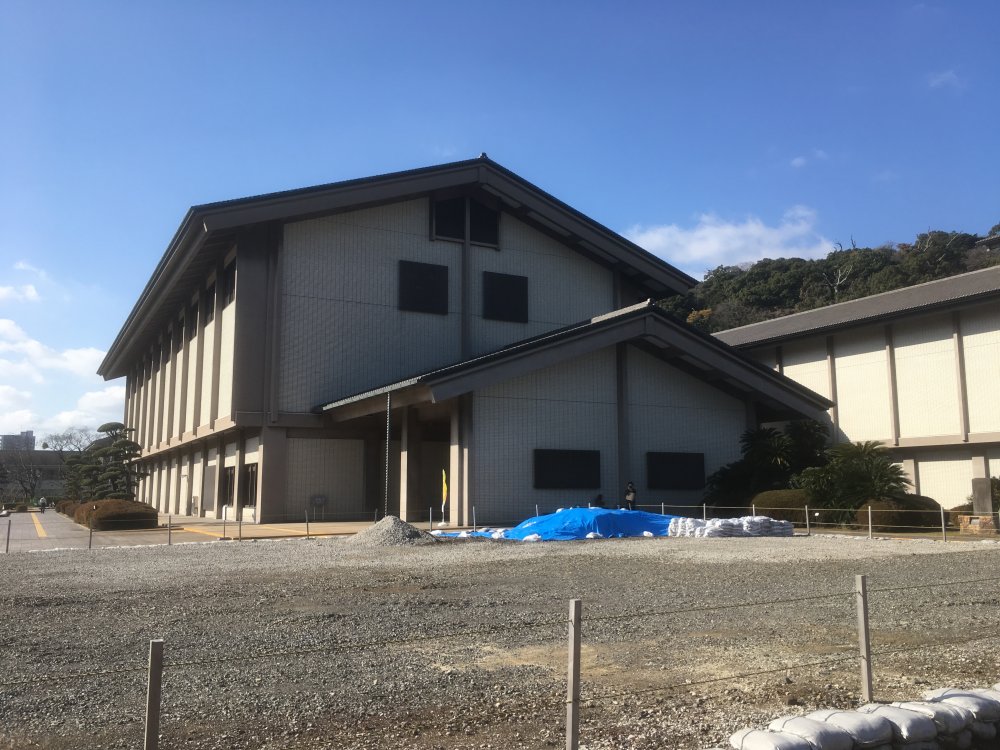
Reimeikan History Museum at the bottom of Shiroyama (Castle Hill) on the right.
Outside the museum there is a statue of Tenshouin (Princess Atsuhime), a Satsuma lady that became the wife of the thirteenth Tokugawa shougun and took part in the surrender of Edo Castle to the Meiji Emperor.
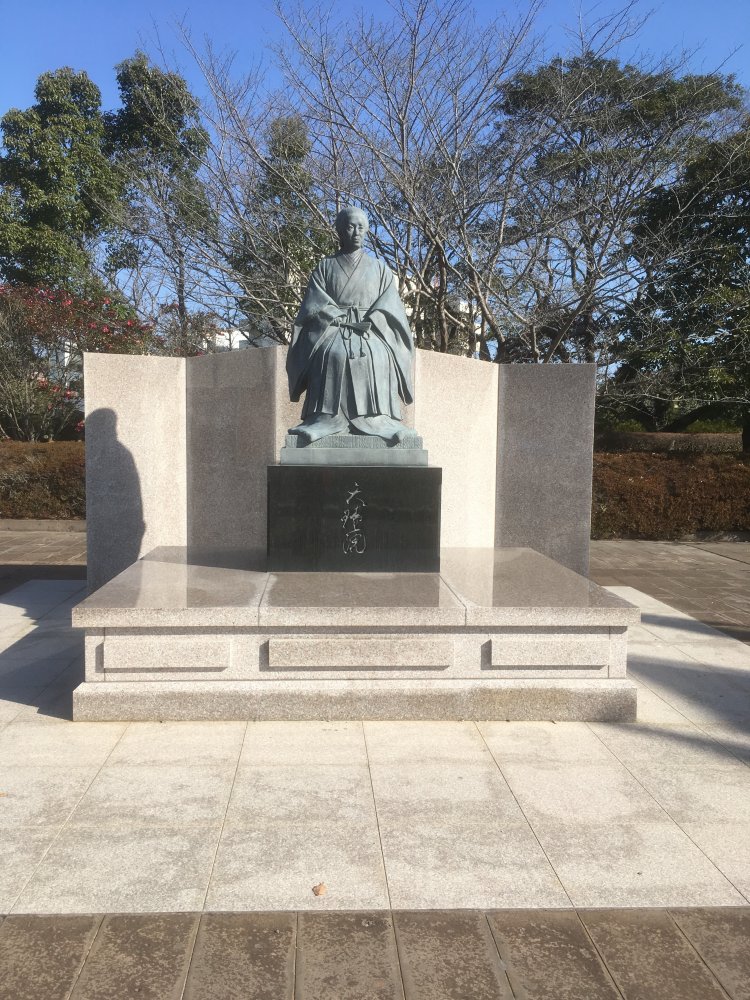
Outside the Reimeikan History Museum there is a statue of Tenshouin (Princess Atsuhime).
Across the main road on the north east side is the historic site of Shigakukan. Here I need to talk for a while about Kagoshima’s hero, Takamori Saigou. I have provided an article about Saigou at the end of this Kagoshima Part 2 for those that may be interested to know more. What I should mention here is the following. Saigou is one of the most popular characters that contributed to put an end to the Tokugawa reign of over 250 years and became a core participant of the Meiji Government that took over in 1868. War between Tokugawa and the Satsuma (now Kagoshima Prefecture)/Choushuu (now Yamaguchi Prefecture) alliance with Saigou as chief commander broke out in 1868 that ended in victory for the latter. After working for the Meiji Government for a couple of years as a core member, he left government and went back to Kagoshima. The Meiji government abolished the fiefdoms of the feudal lords and replaced them with local governments under governors they nominated. They also declared the equality of the people depriving the samurais of their privileges including the wearing of samurai swords. Disgruntled samurais stood up against the new government in protest, and there were many riots all around Japan. One particularly large riot led by Saigou broke out in Kagoshima, which was settled by the Meiji government in 1873 (Seinan Civil War). Saigou committed suicide upon defeat. Shigakukan is a private school Saigou founded to provide military training to the samurais after he left the Meiji government, and from where the riot broke out. The site that Shigakukan stood is now a hospital. But on the remaining foundation walls there can be seen bullet holes resulting from the exchange of fire during the Seinan Civil War.
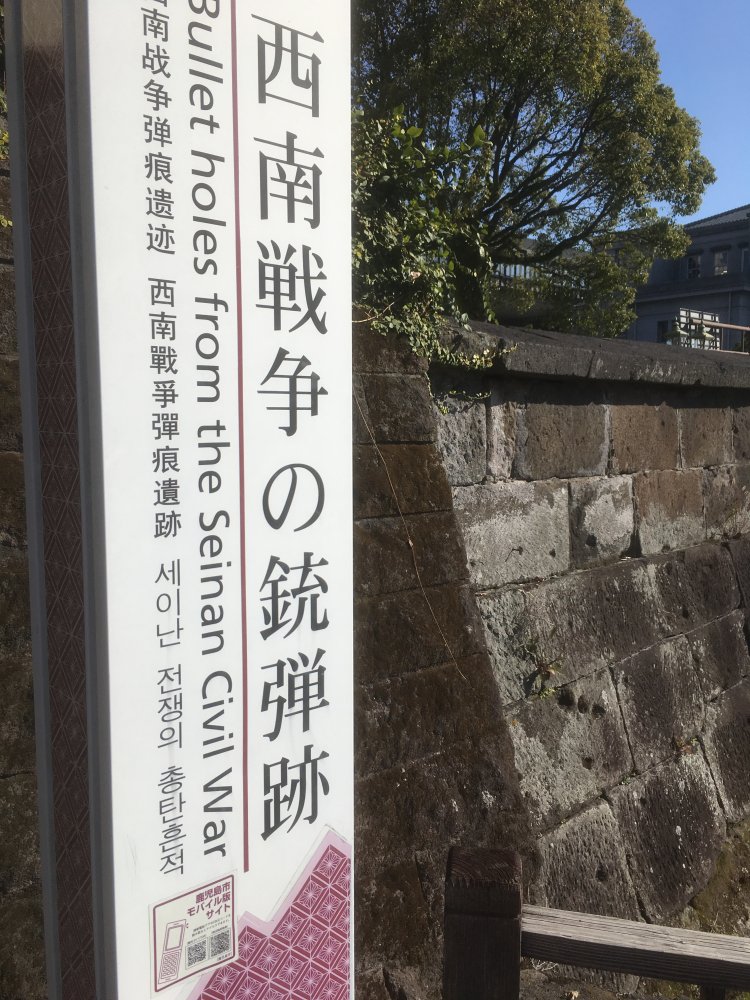
Bullet holes on the remaining foundation walls of Shigakukan resulting from the exchange of fire during the Seinan Civil War.
We crossed the main road to the south to visit an elegant building called
Kensei Kinenkan. This is the former Kagoshima Prefectural Headquarter Building,
modified and moved to this park site. The ground floor is a museum with
a restaurant on the upper floor. I understand the building was originally
constructed in 1925.
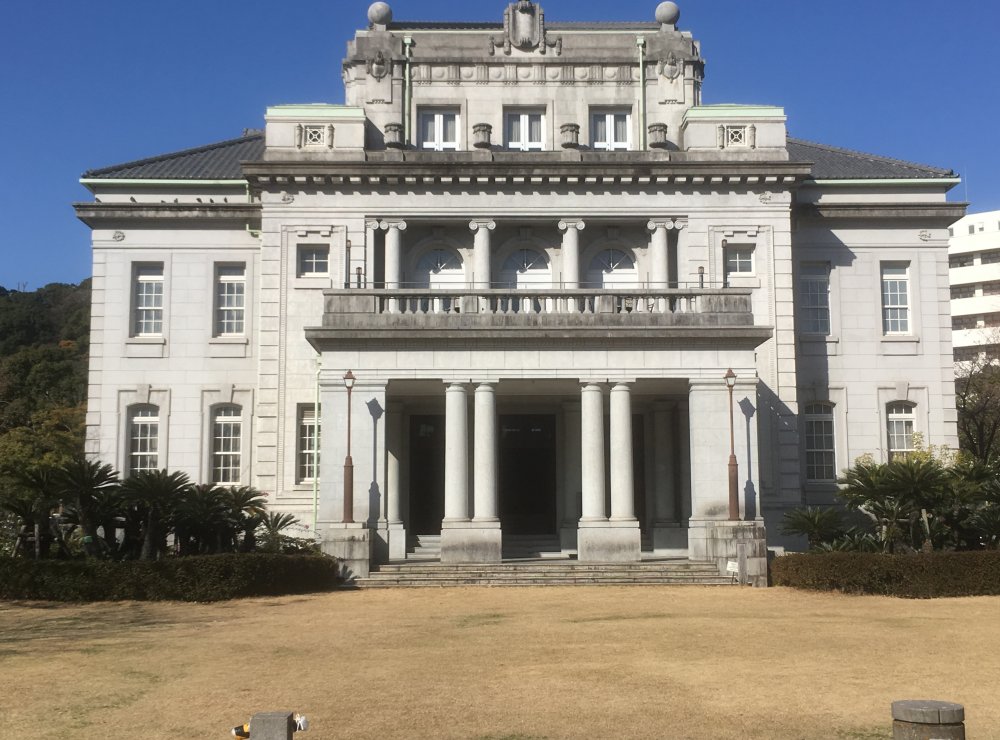
Kensei Kinenkan, formerly Kagoshima Prefecture's headquarter building constructed in 1925.
We went back to Tsuruga Castle ruins to pick up our car and drove off to our next destination Chiran.
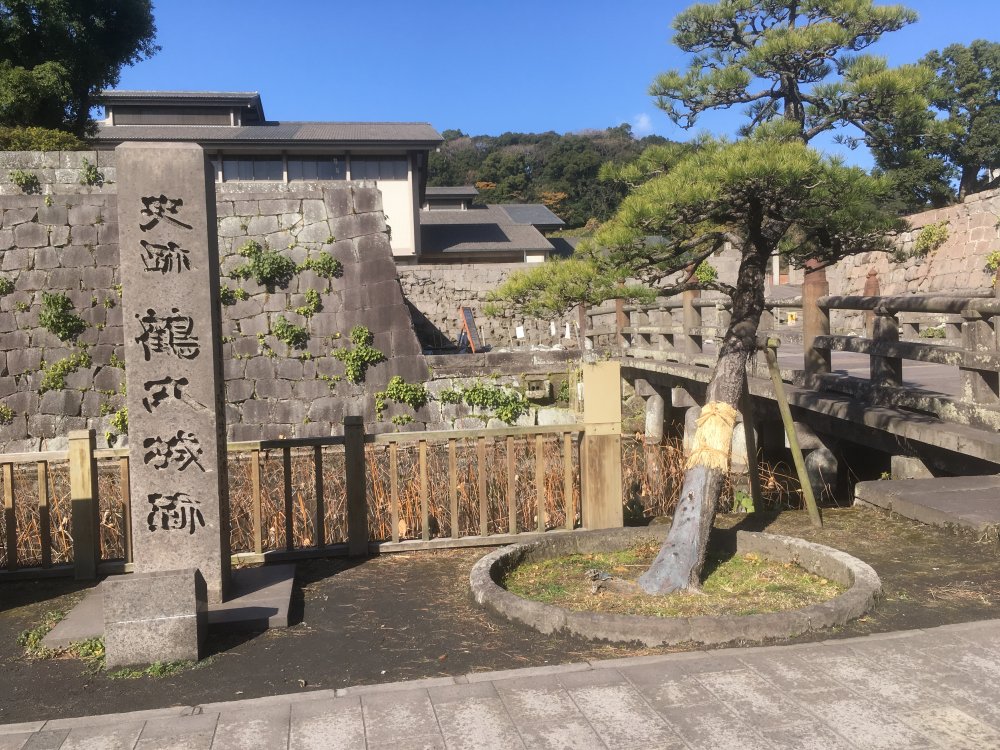
The entrance gate to Tsuruga Castle. Reimeikan History Museum now stands where the main castle was.
Chiran is located in the inland less than forty kilometers south along Satsuma Peninsular from Kagoshima City, and is now part of Minami Kyuushuu City. Chiran was a castle township in the Edo era ruled by a subordinate of the Shimazu Family. During WWII, it served as the defense air base to the war front in Okinawa. It is also one of the largest tea growing areas. We first paid a visit to Chiran Peace Museum. The homepage introduces that the “Museum exhibits many articles and portfolios left by the deceased soldiers who fought for Japan during the final moments of WWII. The last battle took place in Okinawa. The bloodshed was unprecedentedin the Japanese war effort up to that point. The soldiers represented in the Museum died as tokko pilots of special attack forces. The accumulation of the many articles which are exhibited in here today are due to the assistance of many friends and relatives of the deceased pilots.” Particularly striking was the display of many letters the pilots wrote to relatives. The pilots were young from late teens to mid-twenties. My heart went to those that wrote as well as received them. I was solemnly reminded of the importance of the renunciation of belligerence that we have in our Constitution. We briefly visited Chiran Museum next door. The displays here are quite academic, introducing the history and culture of the Chiran area. We viewed a brief movie explaining the similarities of Kagoshima with the southern islands in the Pacific Ocean. There were also displays on the religion of Kagoshima. In particular, how Joudo Shinshuu, a Buddhist sect was persecuted and went into hiding. This was because the sect teaches that anyone that prays saying namuamidabutsu (I believe in Amidabutsu) can go to heaven. Such equality was alien to the feudal society of Kagoshima. We also learned that the move to destroy all Buddhist objects in the early Meiji era was particularly harsh and extreme in Kagoshima Prefecture and many precious objects were lost forever. The joint admission fee for the two museums is six hundred yen.
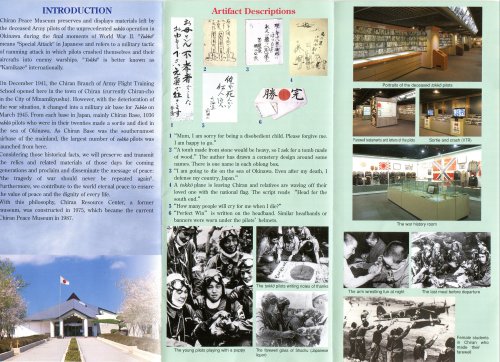
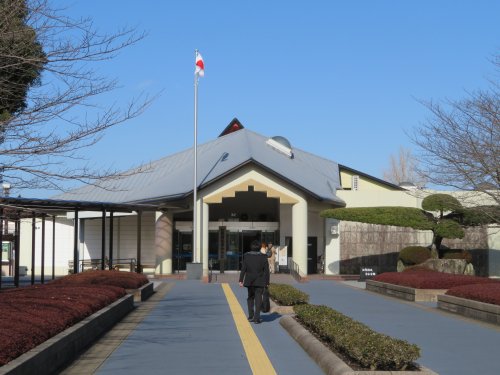
The pamphlet of Chiran Peace Museum (left) and the museum (right).
We next went to visit the famous samurai residences. An area of well-preserved samurai residences has been designated as an Important Preservation District for Groups of Historic Buildings. The preservation efforts are conducted through a limited partnership. Satsuma Fiefdom’s ruling system was unique in that it had over one hundred sub-castles scattered in the countryside to govern and protect the area, hence the need for so many samurais. Chiran was the site of one such sub-castle, and the samurai residences belonged to the subordinate samurais of the sub-castle lord. I understand that the residences were originally built in the 18th century. People, mainly descendants live in the residences, but about ten of them have agreed to open their gardens to the public. The residences are on both sides of a narrow road running east west for about 700 meters.
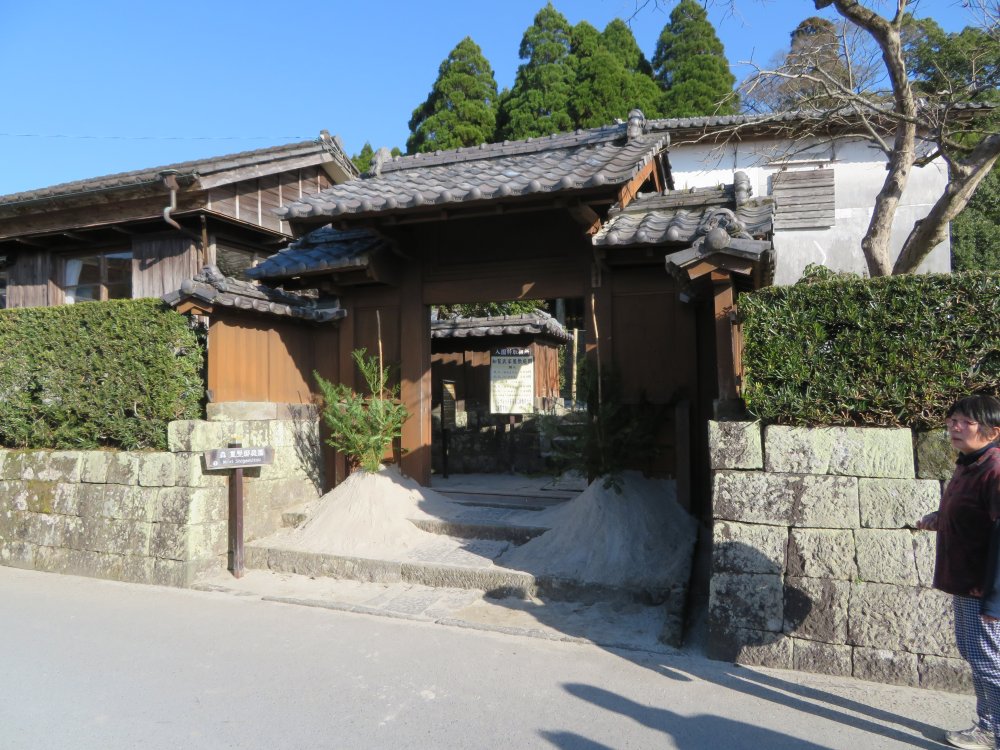
I understand that the residences were originally built in the 18th century.
We parked at the free car park which is on the eastern end of the road. Kikkou castle stood on the hill by the car park. We paid the 500 yen admission fee to the samurai residence gardens. From there we set out to visit all of the gardens open to the visitors. At each garden you had to show the pamphlet you receive upon payment of the admission fee. It was really pleasing to walk along the narrow road observing the row of the residences with well-maintained hedges. The gardens are mostly rock and water style. At one residence, the owner lady showed us how to command the best view of the garden capturing the hills in the back as borrowed scenery. “That’s the direction of the castle” she explained. At another residence we learned that a recent filming of the 2018 Taiga drama had taken place.
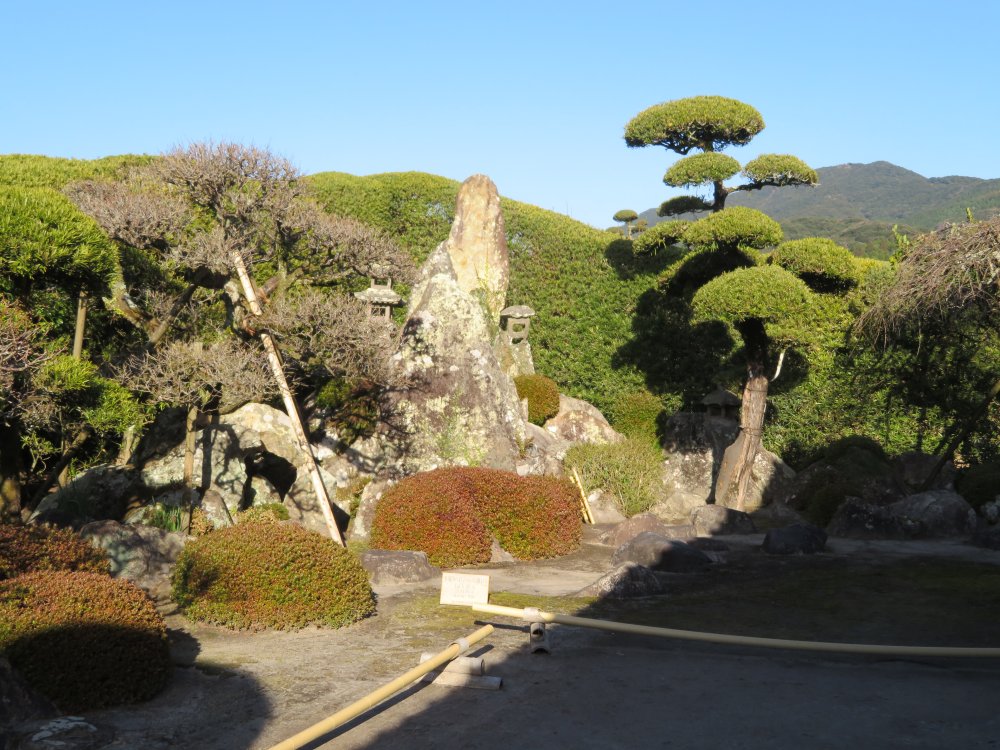
At one residence, we were shown how to command the best view of the garden capturing the hills in the back as borrowed scenery.
The road curves this way and that way and about in the middle there is a zig zag commonly seen in roads leading to castles to stall the progress of invaders. At the zig zag we noticed a stone object called ishigantou that is installed there to dispel evil spirits. This certainly is a recommended tourist attraction. They have a good English homepage and pamphlet.
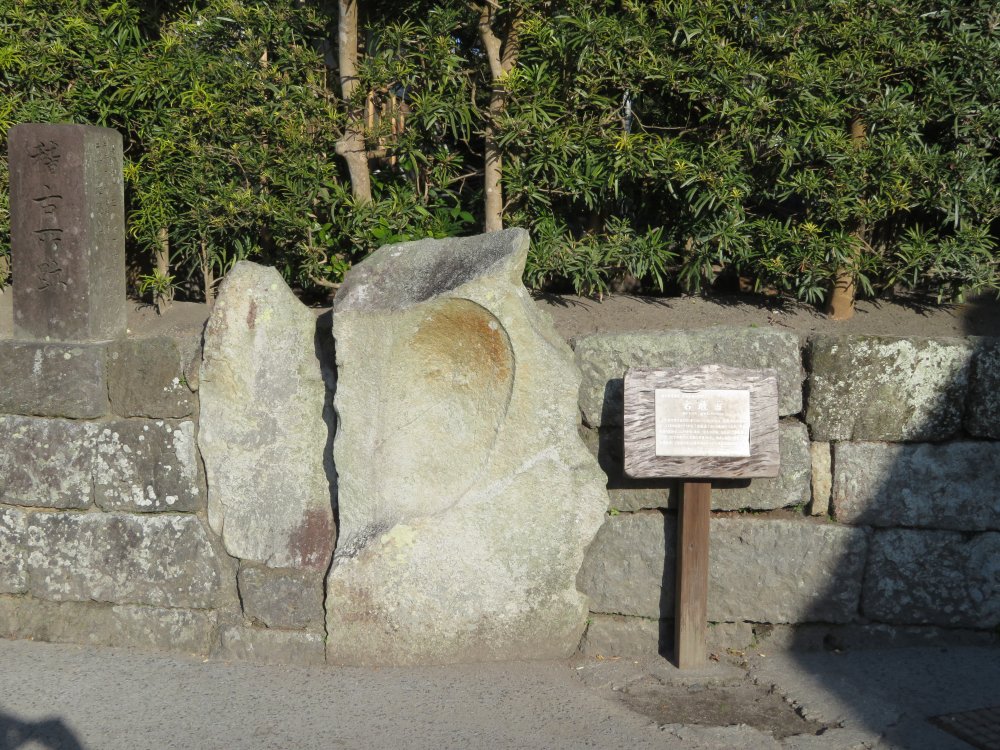
At the zig zag we noticed a stone object called ishigantou that is installed there to dispel evil spirits.
We drove south to Ibusuki Onsen where we had booked a ryokan. On the way from Chiran, we had the opportunity to enjoy a good view of the south west coast of Kagoshima Bay.
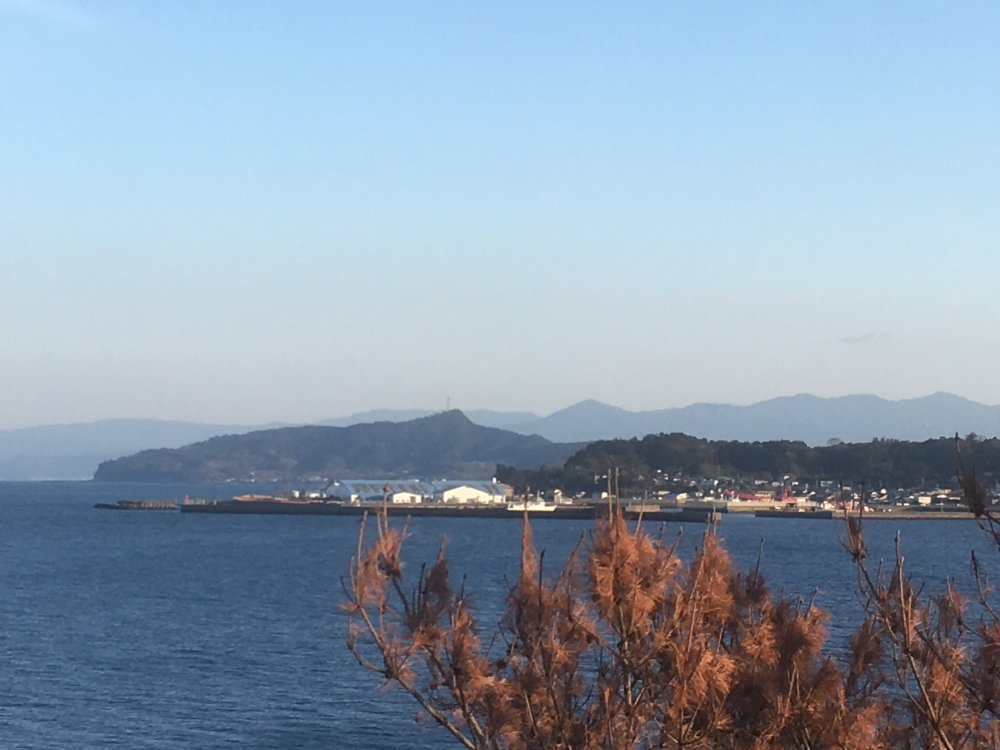
We had a good view of the Ibusuki Onsen area.